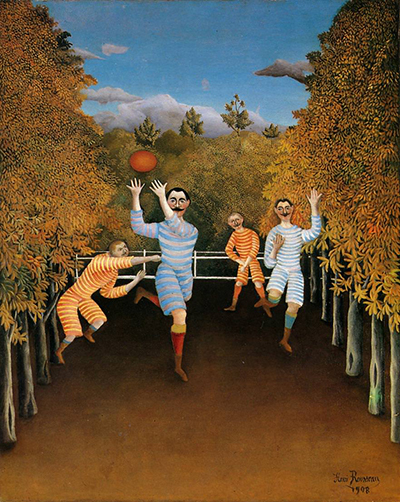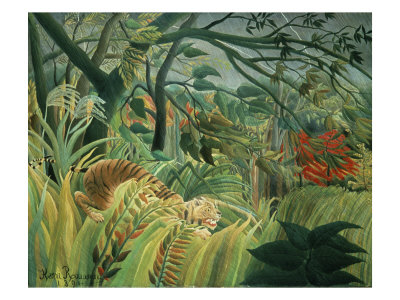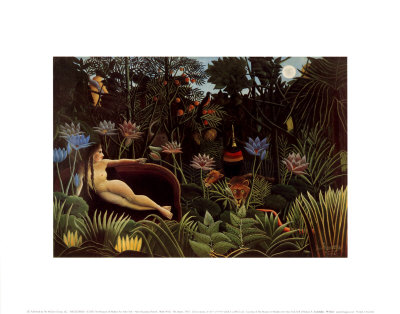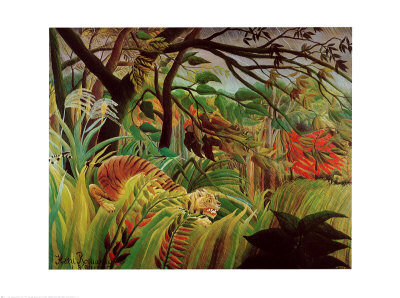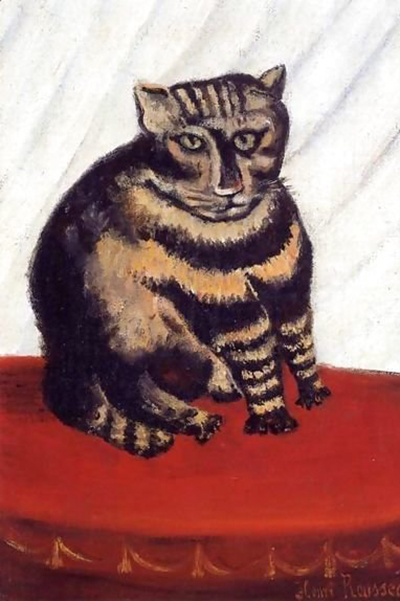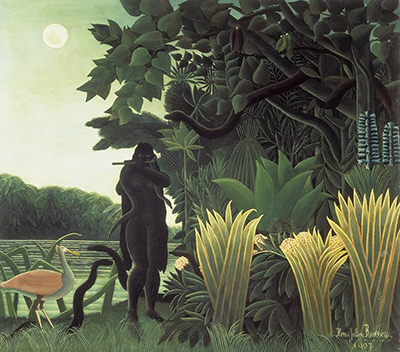Also known as Le Douanier, a witty description of his profession as a customs officer, Henri Rousseau was a French post-impressionist painter of the Primitive style.
Canvases such as The Football Players have been interpreted as Rousseau’s novel attempt to depict modern life, as opposed to painting images of the past. Contrary to its name, this 1908 oil on canvas features four jolly rugby players happily cavorting between two avenues of trees.
Interesting, the painting was completed the same year the first international rugby match took place in Paris – a match between England and France. Rugby was regarded as a new sport at the time, with the figures in this work dash about like moustachioed, pyjama-clad twins.
The Football Players comprises a landscape of rich colours. The sportsmen appear like cut-out puppets, with their shapes seemingly pasted onto the scene in collage-like style. The artist played with the perspective and scale of the men and trees, with the player in the centre thought to be Rousseau himself. There is no sun or moon in this painting but Rousseau included his trademark circle shape, this time as a rugby ball.
Although the artist became famous for his jungle paintings, The Football Players has many of the characteristics, which defined his untrained, awkward style. Rousseau claimed he had “no teacher other than nature”, although he admitted to having received some guidance from two established academic painters, namely Felix Auguste-Clement and Jean-Leon Gerome.
Rousseau was often maligned for the absurdity of the scale of objects and figures within his paintings. Indeed, the oddly contorted limbs of his rigid rugby players may seem naïve to some. However, to many the lack of reality in his work was part of its charm. What was absent in believability was present in character and presence.
